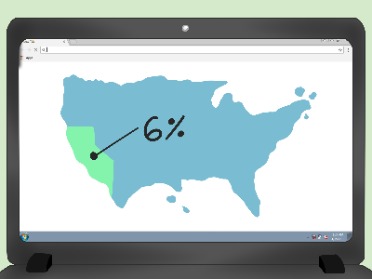
The remaining institutions, approximately 20 percent, fall under the highly decentralized archetype. These are mainly large institutions whose business units can muster sufficient resources for an autonomous gen AI approach. However, that’s merely the start of where finance could implement AI to drive efficiency and productivity. For instance, finance teams are also deploying GenAI to make it easier to find information, fill knowledge gaps, and get work done. According to one 2023 study from Boston Consulting Group and MIT Sloan, GenAI improved a highly skilled worker’s performance by as much as 40% compared with workers who didn’t use it. bank reconciliation definition and example of bank reconciliation A 2024 PwC report found that 60% of CEOs expect GenAI to create efficiency benefits.
Enhance risk management
While artificial intelligence has been around for decades, the broad availability of generative AI, or GenAI, to consumers starting in 2022 and 2023 sparked widespread attention and opened up entirely new possibilities. Businesses quickly began testing the practical uses of the disruptive technology, and in particular, the finance department is examining GenAI and other forms of AI as a potential competitive differentiator. Gynger uses AI to power its platform for financing tech purchases, offering solutions for both buyers and vendors. The company says creating an account is quick and easy for buyers who can get approved to start accessing flexible payment terms for hardware and software purchases by the next day. Learn how to transform your essential finance processes with trusted data, AI insights and automation. Elevate your teams’ skills and reinvent how your business works with artificial intelligence.
Scienaptic AI provides several financial-based services, including a credit underwriting platform that gives banks and credit institutions more transparency while cutting losses. Its underwriting platform uses non-tradeline data, adaptive AI models and records that are refreshed every three months to create predictive straight line method of bond discount intelligence for credit decisions. The platform provides a flexible modeling engine for a detailed view of plans across different business dimensions. Notable features include eliminating spreadsheets, consolidating redundant planning systems, reducing costs and risks, improving decision accuracy and outcomes through predictive analytics, and “what-if” scenario analysis. Some of the key features offered by Datarails include data consolidation from multiple sources, automated financial reporting & monthly close, budgeting, forecasting, scenario modeling, and in-depth analysis.
AI-enabled expense assistants are also becoming more common, helping employees by automatically categorizing expenses, populating and filing the required documentation for each, and providing guidance around a company’s compliance policy. Canoe ensures that alternate investments data, like documents on venture capital, art and antiques, hedge funds and commodities, can be collected and extracted efficiently. The company’s platform uses natural language processing, machine learning and meta-data analysis to verify and categorize a customer’s alternate investment documentation. The platform puts an end to siloed work, providing a unified, enterprise-wide information access for quick decision-making. Its user-friendly interface requires zero coding knowledge and supports real-time data sharing across devices. Other key features include embedded optimization, predictive algorithms, AI capabilities, multi-dimensional modelling, data unification, enterprise-scale planning, and robust security measures.
- Companies can also use AI to automate approval workflows, flagging only the expenses that need the finance team’s review based on predetermined rules, promoting a “manage-by-exception” culture.
- Explore what generative artificial intelligence means for the future of AI, finance and accounting (F&A).
- It analyzes regulatory data, customizes compliance workflows, constantly monitors for rules changes and sends quick alerts through the proper channels.
- Using predictive analytics and machine learning, companies can automatically compile data from all relevant sources—historical and current—to continuously predict future cash flows.
The app’s saving strategies include spotting unused subscriptions, avoiding bank penalty fees, detecting unexpected price hikes, tracking refunds, and suggesting the optimal time for supplier switching. Nanonets is a cutting-edge AI platform that what causes an inventory turnover increase specializes in processing structured data from unstructured documents. This article dives into the specifics of these technologies, highlighting the best AI tools in the financial industry that have proven invaluable in transforming traditional methods into efficient, insightful, and reliable processes. When it comes to conducting business, efficiency and precision are the keys to success. The integration of Artificial Intelligence (AI) into various financial sectors is no longer a topic of future speculation but a present reality. Deloitte refers to one or more of Deloitte Touche Tohmatsu Limited, a UK private company limited by guarantee (“DTTL”), its network of member firms, and their related entities.
Users can receive their paychecks up to two days early and build their credit without monthly fees for overdrafts of $200 or less. It has a network of over 600,000 ATMs from which users can withdraw money without fees. The company partners with FairPlay to embed fairness into its algorithmic decisions. If there’s one technology paying dividends for the financial sector, it’s artificial intelligence. AI has given the world of banking and finance new ways to meet the customer demands of smarter, safer and more convenient ways to access, spend, save and invest money.
The Best AI Tools for Budgeting, Personal Finance, and Financial Management
The journey should begin with a sound strategy and a few use cases to test and learn with well-governed and accessible data. We recently conducted a review of gen AI use by 16 of the largest financial institutions across Europe and the United States, collectively representing nearly $26 trillion in assets. Our review showed that more than 50 percent of the businesses studied have adopted a more centrally led organization for gen AI, even in cases where their usual setup for data and analytics is relatively decentralized.
Centrally led, business unit executed

The need to ramp up cybersecurity and fraud detection efforts is now a necessity for any bank or financial institution, and AI plays a key role in improving the security of online finance. Affirm offers a variety of fintech solutions that include savings accounts, virtual credit cards, installment loans and interest-free payments. It aims to equip businesses and consumers with the tools necessary to purchase goods and services.
It also provides a free credit score, budget alerts, investment tracking, and the ability to categorize bank transactions. With robust safety and security measures in place, Mint ensures users’ financial data remains secure. Mint is a versatile financial management app that consolidates various aspects of personal finance into one platform. It facilitates users to track spending, account balances, budgets, credit score, and more, offering a comprehensive view of one’s financial life.